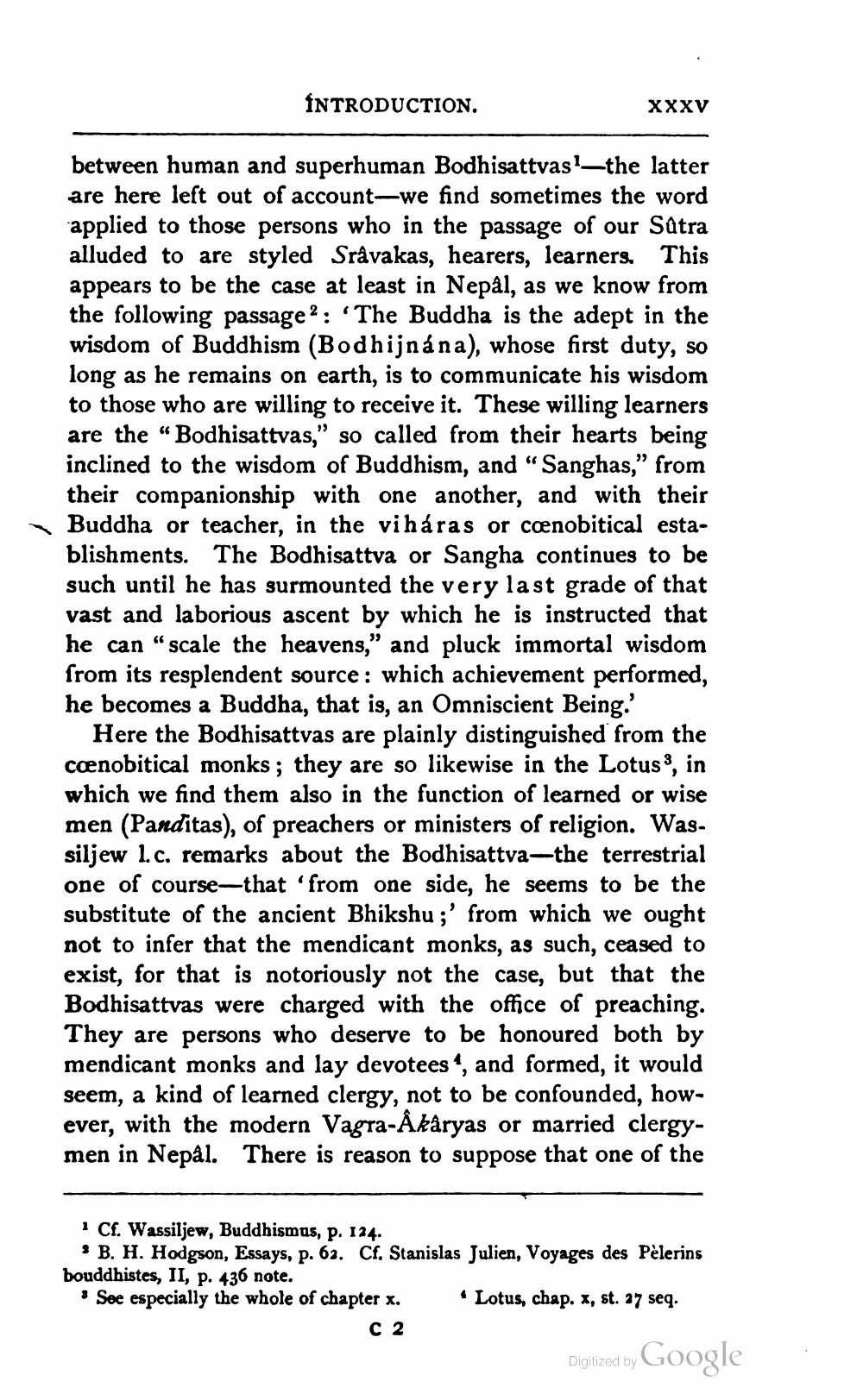________________
INTRODUCTION.
XXXV
between human and superhuman Bodhisattvas!—the latter are here left out of account-we find sometimes the word applied to those persons who in the passage of our Satra alluded to are styled Sråvakas, hearers, learners. This appears to be the case at least in Nepal, as we know from the following passage2: ‘The Buddha is the adept in the wisdom of Buddhism (Bodhijnana), whose first duty, so long as he remains on earth, is to communicate his wisdom to those who are willing to receive it. These willing learners are the “Bodhisattvas," so called from their hearts being inclined to the wisdom of Buddhism, and “Sanghas," from their companionship with one another, and with their Buddha or teacher, in the viháras or cænobitical establishments. The Bodhisattva or Sangha continues to be such until he has surmounted the very last grade of that vast and laborious ascent by which he is instructed that he can “scale the heavens," and pluck immortal wisdom from its resplendent source : which achievement performed, he becomes a Buddha, that is, an Omniscient Being.'
Here the Bodhisattvas are plainly distinguished from the cænobitical monks; they are so likewise in the Lotus 3, in which we find them also in the function of learned or wise men (Panditas), of preachers or ministers of religion. Wassiljew 1.c. remarks about the Bodhisattva-the terrestrial one of course—that 'from one side, he seems to be the substitute of the ancient Bhikshu ;' from which we ought not to infer that the mendicant monks, as such, ceased to exist, for that is notoriously not the case, but that the Bodhisattvas were charged with the office of preaching. They are persons who deserve to be honoured both by mendicant monks and lay devotees“, and formed, it would seem, a kind of learned clergy, not to be confounded, however, with the modern Vagra-Akaryas or married clergymen in Nepal. There is reason to suppose that one of the
1 Cf. Wassiljew, Buddhismus, p. 124.
* B. H. Hodgson, Essays, p. 62. Cf. Stanislas Julien, Voyages des Pèlerins bouddhistes, II, p. 436 note. * Soe especially the whole of chapter x. • Lotus, chap. x, st. 37 seq.
C 2
Digitized by
Digitized by Google




